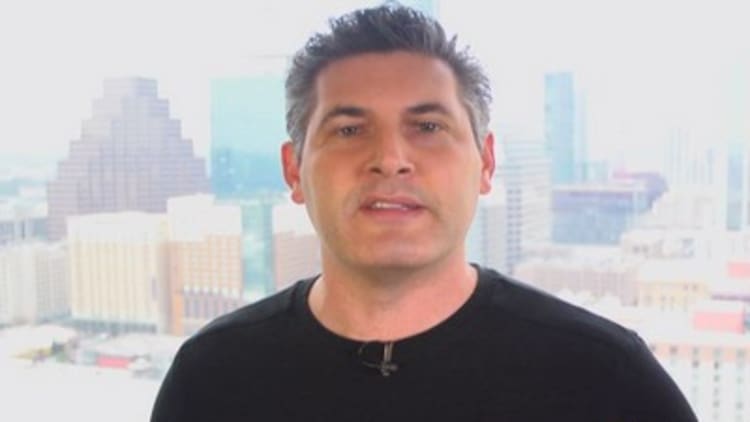At the start of 2014, things were looking up for active managers in their long-running (and usually losing) battle against the S&P 500.
For one, many believed the extended bull market run had to come to an end, and the time for active managers to show their value was going to begin as a pullback gave them the chance to selectively outsmart the index. It even looked good, at least for a little while, with the markets starting 2014 in choppy trading fashion. Yet any hope that 2014 will be a year in which active managers beat the index is not looking good at the midway mark.
Only 27 percent of actively managed large-cap core funds, or 239 funds, have beat the S&P 500 in the first half of the year, according to a new report from S&P Capital IQ. That's the lowest level of active managers to beat the index since 2011, when only 19 percent beat the S&P 500 for the full year. Last year, 42 percent of large-cap core fund active managers notched a win against the S&P.
Large-cap funds make up the core of most retail investor portfolios, meaning that investors are paying up for continued underperformance from funds that receive a majority of their assets—the average expense ratio for U.S. large-cap mutual funds is 1.17 percent, according to S&P Capital IQ. S&P 500 index funds and ETFs have expense ratios as low as 0.05 percent.
"While investors paying over 100 basis points in management fees are certainly not expecting 'closet index funds,' they are likely expecting better returns," S&P Capital IQ noted in the report.
Expense ratio was not even the biggest problem for the active funds. "I thought expense would be a bigger factor, but it turns out that they are just making what appear to be, at least as of now, the wrong calls," said Todd Rosenbluth, head of ETF and mutual fund research at S&P Capital IQ.
Read MoreThere is nobility in managing mutual funds; hedge funds, not so much
In fact, to test the argument that it is not fair to compare funds that have an expense ratio to a benchmark like the S&P 500 that has none, Rosenbluth also ran the numbers assuming the S&P 500 Index had the 1.17 percent expense ratio of the average fund. He reduced the S&P index return by half of 1.17 percent (because it is the mid-year mark) and still, only 38 percent of active large-cap funds beat the index. And the truth is that all these funds are trying to beat the S&P 500, regardless of the fact that it has no expense ratio to be a drag on performance.
The expectation of a market pullback, in theory, could have given active managers a chance to buy stocks they had stayed out of due to valuation concerns, or to re-purchase stocks they had sold as the stocks moved higher, but with the market continuing to set record highs—22 for the S&P 500 so far in 2014—managers have not had the opportunity to shine.
"It was reasonable that after the strong run we had some managers who took chips off the table and went to cash expecting another chance to get in, but the 7 percent return in first half has not given them many opportunities," Rosenbluth said. As for the stocks that managers have kept betting on, "Unfortunately, managers haven't picked the right ones," Rosenbluth said.
Best and worst of active managers
Large-cap funds that have turned in the worst performance so far in 2014 include the Jensen Quality Growth Fund (JENSX) and Calamos Opportunistic Value (CVAAX).
Jensen holds just 28 stocks and some of its largest holdings—3M, Praxair and Colgate-Palmolive—underperformed the S&P 500 in the first half of 2013, contributing to the fund's subpar gain of 2.1 percent, S&P noted in the report. The Jensen fund did perform in line with the S&P 500 in 2013.
Calamos Opportunistic Value is up 2.9 percent in 2014. It has 50 holdings, but financials made up 26 percent of fund assets, about 1,000 basis points greater than the S&P 500 Index weighting to financials, while information technology was just 4 percent of assets, more than 1,400 basis points less than the S&P 500 Index.
Read MoreTop mutual fund managers pushing these markets
Rosenbluth said these funds have a volatility rating that is lower than the average, and it is not surprising to see lower risk funds underperform during bull market runs. But he added that these funds also have lower than average Sharpe ratios—a measure of risk-adjusted return. "The lower risk is not rewarding investors," he said, though he added that it is only the mid-year mark for these funds.
We held cash in the fund waiting for opportunities to buy stocks on a market decline, and the decline never came.Jeff Millerportfolio manager, Calamos Opportunistic Value Fund
Calamos portfolio manager Jeff Miller said the fund does have an approach geared to downside protection, but in general, the more active a fund is, the more it has underperformed this year, and that can be seen in the relatively weak performance of equity long/short hedge funds, too.
"Lack of volatility in the markets, and a market that has pretty much gone straight up for a while now," are the main reasons for the active management lag, he said.
Speaking to the Calamos fund performance specifically, Miller cited the strong performance in the utility sector (up 18.4 percent year-to-date through June 30). Utilities are a sector that the Calamos fund has historically avoided and does not find attractive on a long term basis—it's had no exposure to utilities for many years. "In the first half of the year, investors were searching for safety in stocks with high yields, and utilities were their first choice," Miller said.
In the financials sector, 10 of the top 11 performers year-to-date have been REITs. The Calamos fund is overweight financials but does not own any REITs at the moment because it thinks REIT are fully valued and a pullback is required before they will be worth buying again.
"Errors of omission were the most detrimental to performance," Miller said. He echoed the concern raised by Rosenbluth about finding entry points in a rising market, saying, "We held cash in the fund waiting for opportunities to buy stocks on a market decline, and the decline never came."
David Mertens, Jensen managing director, said that index funds may be on top now, but the extended rally in stocks also makes the passive approach vulnerable over the longer-term. Mertens cited S&P Earnings and Dividend Quality Rankings: "A+" rated companies in the S&P 500 rose by 3.3 percent in the first six months of 2014; by contrast, companies rated "B" and "C" rose by more than 10 percent.
"Favoring higher quality businesses, in our view, is the right long term recipe for our investors, but has not been rewarded in the current market environment," Mertens said. He also said index funds don't provide risk management and may be exposing investors to threats they don't understand. "The current market rally, measured by the S&P 500, has lasted 1,000 days without a correction."
The best-performing large-cap fund in 2014 has been the Sterling Capital Special Opportunities Fund (BOPAX), up 13.3 percent in the first half of 2014. The fund's largest sector weighting is in information technology (34 percent of assets). The fund also had a recent 4 percent weighting inHalliburton, a stock that rose more than 40 percent in the first half of 2014.
Other top-performing large-cap funds at the mid-year mark (6/30) included:








